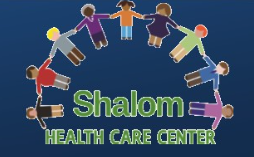
by Lauren Chars
The use of supplements has become very popular as a way to promote well-being and prevent deficiencies. However, using certain prescription medications concurrently could lead to dangerous consequences that may cause more harm than help. Be sure to check with your healthcare provider and pharmacist before starting or stopping a supplement. The following are some common combinations to watch out for:
Fish oil
Common uses: High cholesterol, cholesterol imbalance, prevention of heart disease
Interactions: Blood thinners (anticoagulants and antiplatelets), some blood pressure medications, certain oral contraceptives
Fish oil has been shown to decrease platelet aggregation and can thin your blood more than desired, increasing the risk of bleeding when taken with other blood thinners. In addition, certain blood pressure medicines and birth control pills may be prevented from working properly when taken with fish oil.
CBD Oil (Cannabidiol)
Common uses: Epilepsy, insomnia, anxiety, pain, and many others!
Interactions: benzodiazepines (i.e. Xanax, Klonopin), sedatives (i.e. Ambien), warfarin, topiramate, valproic acid, and several others
Although CBD is the hot topic recently and is too new to have all of the data we need to assess its safety, there are some medications known to increase your risk of an interaction. Before starting CBD, be sure to check your medication list with a pharmacist to make sure you will stay safe!
Ginkgo:
Common uses: Alzheimer’s Disease, dementia, memory support
Interactions: Benzodiazepines/anti-anxiety medications, warfarin and other blood thinners, cholesterol medications (i.e. atorvastatin).
Commonly used to aid memory, ginkgo can interact with blood thinners, sedatives and some cholesterol medications if used inappropriately.
St. John’s Wort
Common uses: Depression, mood disorders
Interactions: Other antidepressants, migraine medications, dextromethorphan cough syrup, warfarin, oral contraceptives, and many others!
There are few medications that St. John’s Wort does not interact with and it is very important to check with a health care professional before you start this supplement!
Melatonin:
Common uses: insomnia, jet lag, other sleep disorders
Interactions: Alcohol, benzodiazepines, sedative hypnotics, some antihistamines (i.e. Benadryl), opioids, muscle relaxers
Other medications that cause drowsiness can interact with melatonin, so it is always good to check with a pharmacist before you take more than one medication before bed.
Ginger
Common uses: treatment and prevention of motion sickness, vertigo, morning sickness in pregnancy
Interactions: warfarin, aspirin, blood thinners
Like fish oil, ginger may increase the risk of a bleed if not used with caution when taking blood thinners.
Supplements can improve your health in many ways, but it is essential to assess the benefits versus the risks before taking them along with other medications. A good rule of thumb is let your healthcare provider and pharmacist know each time before you start or stop a new supplement!
Sources:
- National Institute of Health. Office of Dietary Supplements. Dietary Supplement Fact Sheets. Accessed June 18, 2019 at https://ods.od.nih.gov/
- Miller LG. Herbal medicinals: selected clinical considerations focusing on known or potential drug-herb interactions. Arch Intern Med 1998:158;2200-11. Accessed June 18, 2019.
- Natural Medicines. Therapeutic Research Center. Summerville, MA. https://naturalmedicines.therapeuticresearch.com/ Accessed June 18, 2019.








